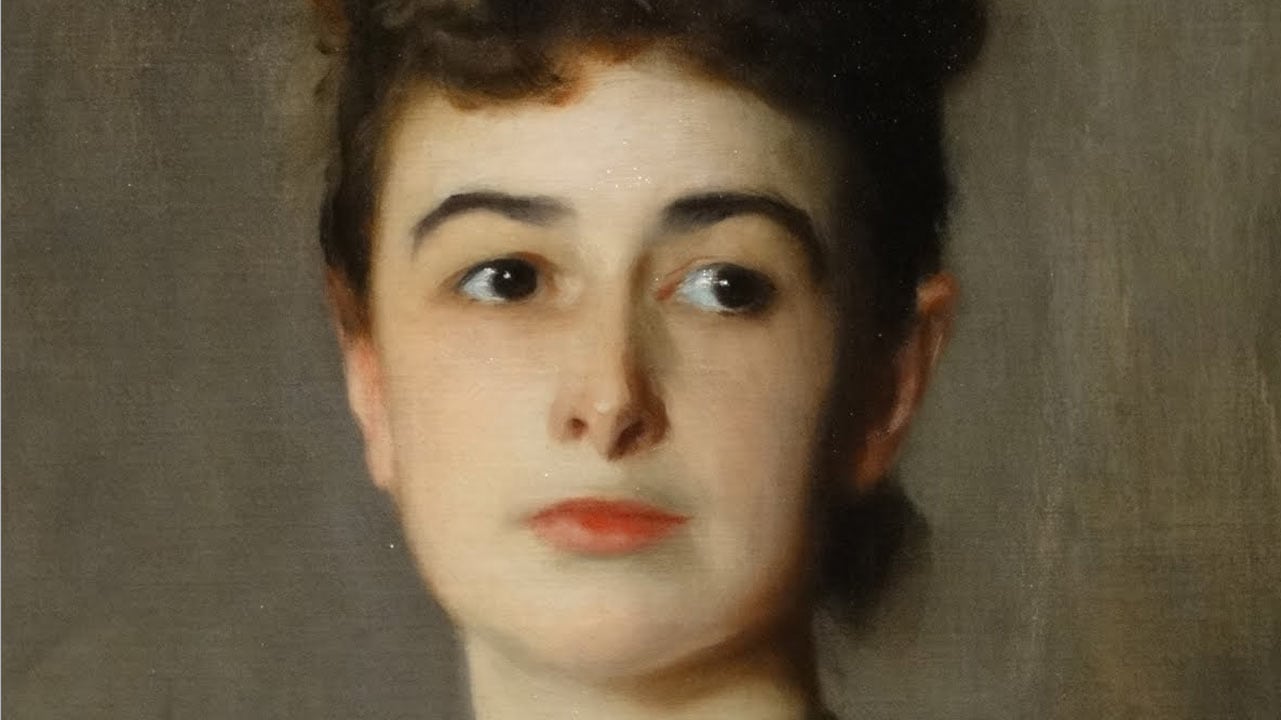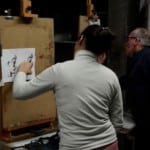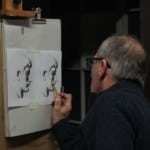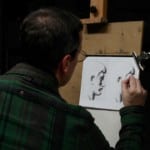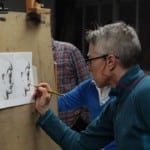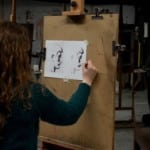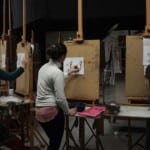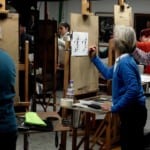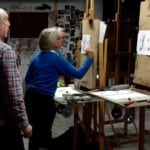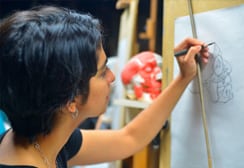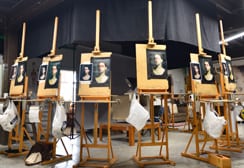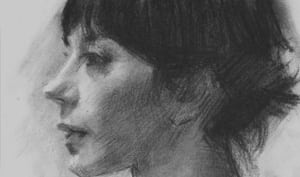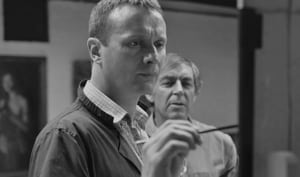Richard Schmid in his book “Alla Prima” said there are “superb displays of edges are present in most of the masterpieces of representational painting. Today however edges are probably one of the least understood of our tools”.
In this lesson we focus on edges. How the change from one tone to another describe the form of the face. For example the rounded edges of the cheek have a longer gradation in tone than the edge of the chin which is more abrupt.
Edges can be described in two ways fast and slow or hard and soft.
Fast and Slow, imagine walking down a hill or falling over the edge of a cliff, one is a lot faster than the other.
Hard and Soft Edges, its the difference between a cylinder and a box one has a smooth rounded form the other has sharp angles.
Below students are working on one of the exercises designed to help them understand how the variety of edges from shadow to light describe the forms of the face.


